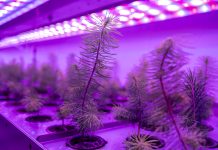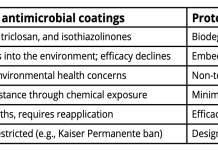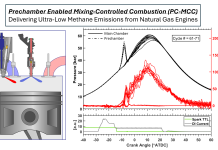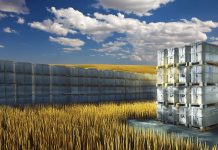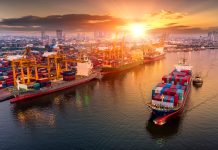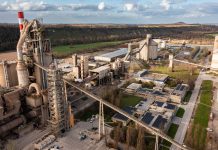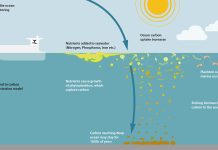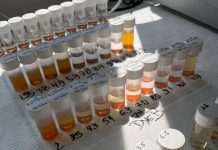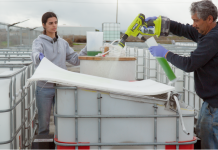Open Access Government produces compelling and informative news, publications, eBooks, and academic research articles for the public and private sector looking at health, diseases & conditions, workplace, research & innovation, digital transformation, government policy, environment, agriculture, energy, transport and more.
Home 2025
Archives
Proving the power of biochar beyond net zero
Concerning proving the power of biochar beyond net zero, Alastair Collier, Chief R&D Officer, and Dr Sally Wilkinson, Lead Scientist at A Healthier Earth, provide insight.
Energy-efficient greenhouse production for emission-free food cultivation
Michel J. Verheul discusses the advancements in energy-efficient and emission-free greenhouse production in Norway, focusing on the innovative methods developed by researchers at the Norwegian Institute of Bioeconomy Research (NIBIO).
ProteCoat™: Non-toxic antimicrobial coating for safer hospitals and public spaces
ProteCoat™ is a non-toxic antimicrobial coating technology developed by Reactive Surfaces aimed at reducing healthcare-associated infections (HAIs) in hospitals and public spaces.
Navigating the sea of uncertainty around Marine Carbon Dioxide Removal (MCDR)
Prof. Christopher Pearce and Dr Willem van Dorp discuss the need for science-based governance approaches when evaluating the potential benefits, impacts and effectiveness of emerging marine carbon dioxide removal techniques.
Life PeatCarbon Project: The role of peatlands for climate change mitigation
Dr. biol. Māra Pakalne from the University of Latvia provides insights into the LIFE PeatCarbon project by exploring the significance of peatlands in mitigating climate change.
Reducing methane emissions from natural gas reciprocating engines: The silent contributor to global climate...
While natural gas is a cleaner-burning alternative to coal and diesel, its use comes with a significant downside: methane emissions. Adam Dempsey from Marquette University highlights prechamber-enabled mixing-controlled combustion as a promising technology for reducing methane slip from natural gas engines.
Carbon capture surfaces: Supporting Canada’s agricultural sector and climate ambitions
Canada is positioning itself as a global leader in carbon dioxide removal (CDR) as it addresses climate change and creates economic opportunities for farmers. Beth McDaniel, JD from Reactive Surfaces explains how.
CO2 mineralization in cement and concrete
Hegoi Manzano from the University of the Basque Country (UPV/EHU) explores CO2 mineralization in cement and concrete, along with related EU policies and programmes, as well as carbon capture, utilisation, and storage.
How can carbon capture surfaces help the planet?
Beth McDaniel, JD, President of Reactive Surfaces highlights the potential of Carbon Capture Surfaces (CCS), an innovative and affordable of method using algae for CO2 removal, addressing the urgent need for scalable solutions to combat climate change.
Sustainable textile production: Policies and certifications transforming the global landscape
Victor Durand, the Head of Operations at Ever Dye, discusses how the company meets the new standards for sustainable textile production.
Catalyzing mineral weathering for permanent, safe and cost-effective carbon storage
Martin Van Den Berghe, CEO of Cytochrome, discusses catalyzing mineral weathering for permanent, safe, and cost-effective carbon storage.
Onboard Carbon Capture (OCC): The Everlong project
The maritime industry must decarbonise. Onboard Carbon Capture (OCC) offers a promising solution for mitigating emissions from existing and new build vessels. Here, the EverLoNG project demonstrates the feasibility of OCC, exploring its technical, logistical, environmental and regulatory aspects, paving the way for wider adoption.
Redefining industrial sustainability
Committed to providing decarbonisation solutions for the global cement and lime industries, Leilac’s CEO, Daniel Rennie, discusses the principles for an environmentally and economically sustainable industrial transformation.
Biochar technology to sequester billions of tons of CO2
This CDR champion industry, biochar, has proven technology that can quickly grow to sequester billions of tons of CO2. However, the industry has growing pains it must overcome to reach its extraordinary potential, James Gaspard, CEO of Biochar Now LLC, reveals.
Ocean nourishment sequestering carbon dioxide in the deep ocean
Phytoplankton have been essential to life on Earth for over 35 billion years. Through photosynthesis, they consume carbon dioxide on a scale comparable to that of forests and other land plants. Edwina Tanner from the WhaleX Foundation shares insights on this and discusses the potential for plankton-based solutions in marine carbon dioxide removal (mCDR) and ocean nourishment.
Decarbonising the textile industry: A revolutionary pigment from the lab to the market in...
Explore the journey of decarbonising the textile industry through the remarkable example of bringing a revolutionary pigment from the lab to the market in three years, starting with the milestones of this captivating journey.
Carbon capture surface: CO2 removal technology
Beth McDaniel, JD, Partner President from Reactive Surfaces Ltd. LLP, introduces us to Carbon Capture Surfaces, a CO2 removal technology that checks all the boxes.
All hands on deck for ocean-based CO2 removal research
Prof. Dr. Katja Fennel, Chair of the Department of Oceanography, Dalhousie University, Halifax, Nova Scotia, Canada, argues that we need all hands on deck for ocean-based CO2 removal research.
Emissions from building and construction can be halved with current technologies and practices
Filip Johnsson and Ida Karlsson from Chalmers University of Technology argue that building and construction emissions can be halved with current technologies and practices in place.
Decarbonizing the textile industry: How Ever Dye is revolutionizing dyeing processes
While the textile industry is continuously evolving and becoming more technologically advanced, it still relies on highly polluting and energy-intensive processes. Victor Durand, Head of Operations at Ever Dye, shares the company’s commitment to changing this and decarbonizing the textile industry.

